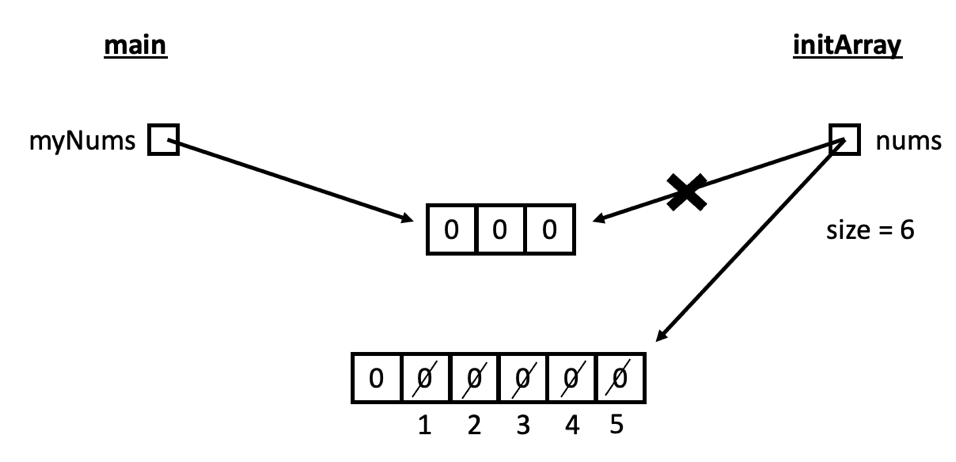
position < word.length() && !found
Problem 2
Part A.

Part B.
[0, 0, 0]
// VendingMachine models the inventory inside a candy machine.
// interface invariant: the amount of each kind of candy in the machine
// is always non-negative
public class VendingMachine {
public static final int HERSHEYS = 0;
public static final int M_AND_MS = 1;
public static final int STARBURST = 2;
public static final int NUM_KINDS = 3;
private int[] amounts;
// Creates an empty vending machine object
public VendingMachine () {
amounts = new int[NUM_KINDS];
}
// PRECONDITION for parameters to get, buy, and supply methods:
// -- kind is one of HERSHEYS, M_AND_MS, and STARBURST
// -- quantity > 0 [applies to buy and supply only]
// Returns the amount in this machine of the kind of candy specified
// PRECONDITION: see above
public int get(int kind) {
return amounts[kind];
}
// Adds to this vending machine the given quantity of the kind of candy
// specified.
// PRECONDITION: see above
public void supply(int kind, int quantity) {
amounts[kind] += quantity;
}
// Attempts to buy the given quantity of the kind of candy specified
// from this vending machine. Returns the actual number of pieces
// given out, based on the current inventory (i.e., it can't give out
// more than is currently in the machine); updates inventory accordingly.
// PRECONDITION: see above
public int buy(int kind, int quantity) {
if (quantity > amounts[kind]) { // >= works too
quantity = amounts[kind];
amounts[kind] = 0;
}
else {
amounts[kind] -= quantity;
}
return quantity;
}
}
b. constant definitionsIf student used three separate ints in part A, the correct answer for B was to circle everything -- although constructor optional because of default initialization.
Part C. Note: I reduced this part to be out of 5
points instead of the original 6.
Correct answer depends on implementation of Part A.
For an array in part A:
Part D.
ArrayList<VendingMachine> machines;Alternate solution:
VendingMachine[] machines;
Part E.
Goes with first solution to part D, above:
machines = new ArrayList<>();
for (int i = 0; i < 10; i++) {
machines.add(new VendingMachine());
}
Goes with alternate solution to part D:
machines = new VendingMachine[10];
for (int i = 0; i < 10; i++) {
machines[i] = new VendingMachine();
}
Problem 4. Several correct solutions. Here are two:
cp $ASNLIB/public/08-28/* . cp $ASNLIB/public/08-28/* ~
Some students, instead, tried to copy the original array, and then shift elements just one position at a time. I don't know if any of those ended up with full credit since the code is somewhat trickier. It's also slower (O(n2)), and takes more space than necessary because it would involve a third array of the correct size for the final answer.
public static int[] zeroesRemoved(int[] nums) {
int numNonZeros = 0;
// figure out the length of the result array
for (int i = 0; i < nums.length; i++) {
if (nums[i] != 0) {
numNonZeros++;
}
}
int[] result = new int[numNonZeros];
int resultIndex = 0;
// copy only non-zeroes into the result array
for (int i = 0; i < nums.length; i++) {
if (nums[i] != 0) {
result[resultIndex] = nums[i];
resultIndex++;
}
}
return result;
}